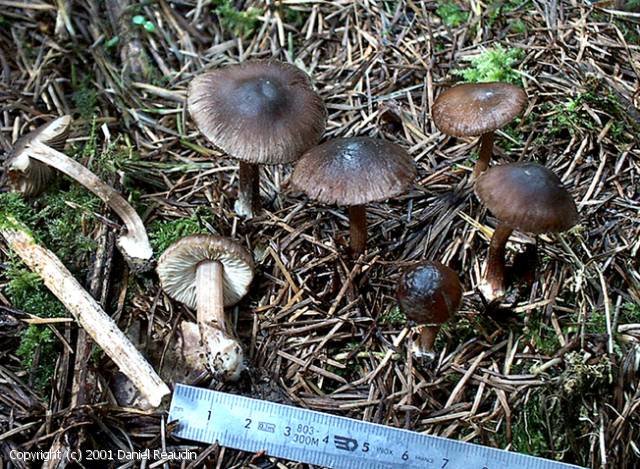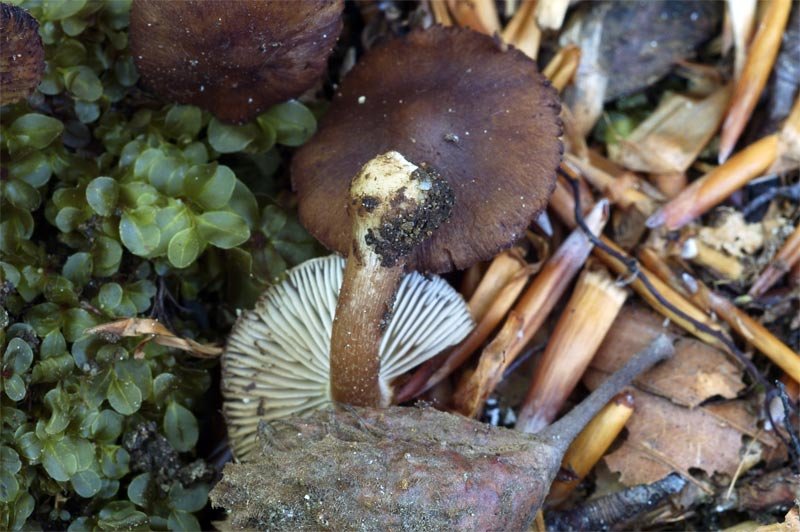Similar fiber (Inocybe assimilata)
- Division: Basidiomycota (Basidiomycetes)
- Subdivision: Agaricomycotina (Agaricomycetes)
- Class: Agaricomycetes (Agaricomycetes)
- Subclass: Agaricomycetidae (Agaricomycetes)
- Order: Agaricales (Agaric or Lamellar)
- Family: Inocybaceae (Fibrous)
- Genus: Inocybe (Fiber)
- Type: Inocybe assimilata (Similar fibre)

head 1-4 cm in diameter. In a young mushroom, it has a wide conical or bell-shaped shape. In the process of growth, it becomes broadly convex, forming a tubercle in the center. It has a fibrous and dry texture. Some mushrooms may have a cap with brown or brown-black scales. The edges of the mushroom are first tucked up, then raised.
Pulp has a yellowish or whitish color and an unpleasant odor that distinguishes this mushroom from others.
Hymenophore the fungus is lamellar. The plates themselves grow narrowly to the leg. They are often located. Initially, they may have a cream color, then they gain a brown-red color with light, slightly jagged edges. In addition to records, there are many records.
Legs have 2-6 cm in length and 0,2-0,6 cm in thickness. They are the same color as the mushroom cap. A powdery coating may form in the upper part. The old mushroom has a hollow stem, usually with a white tuberous thickening at the base. The private veil is rapidly disappearing, white in color.
spore powder has a dark brown color. Spores can be 6-10×4-7 microns in size. In shape, they are uneven and angular, light brown in color. Four-spore basidia 23-25×8-10 microns in size. Cheilocystids and pleurocystids can be club-shaped, cylindrical or spindle-shaped with a size of 45-60×11-18 microns.

Quite common in Asia, Europe and North America. Usually grows singly or in small groups. Distributed in coniferous and mixed forests in the above area.

There is no information about the toxic properties of the fungus. The effect on the human body is also poorly understood. It is not harvested or grown.
The mushroom contains the poison muscarine. This substance can affect the autonomic nervous system, causing an increase in blood pressure, nausea, and dizziness.









